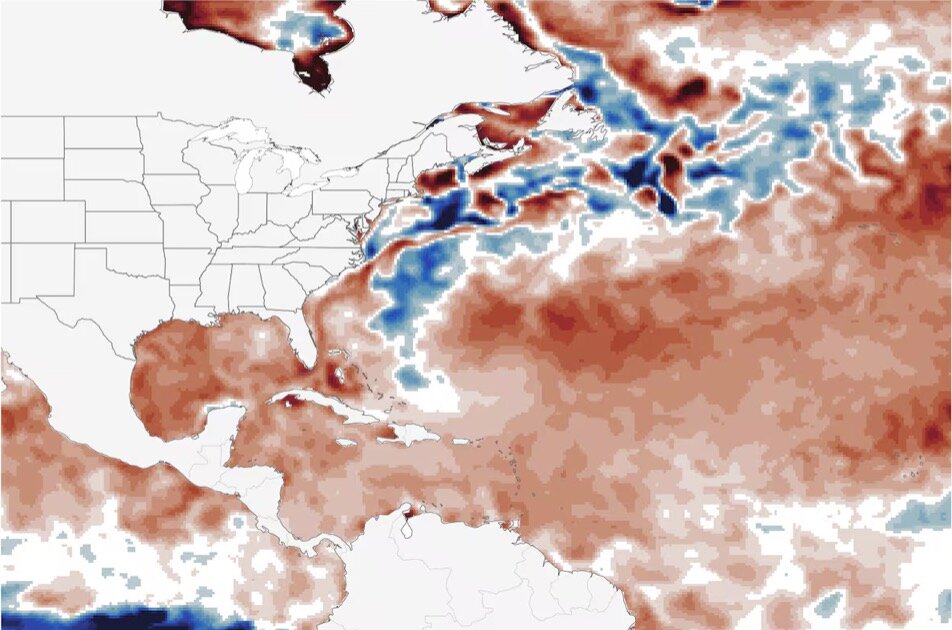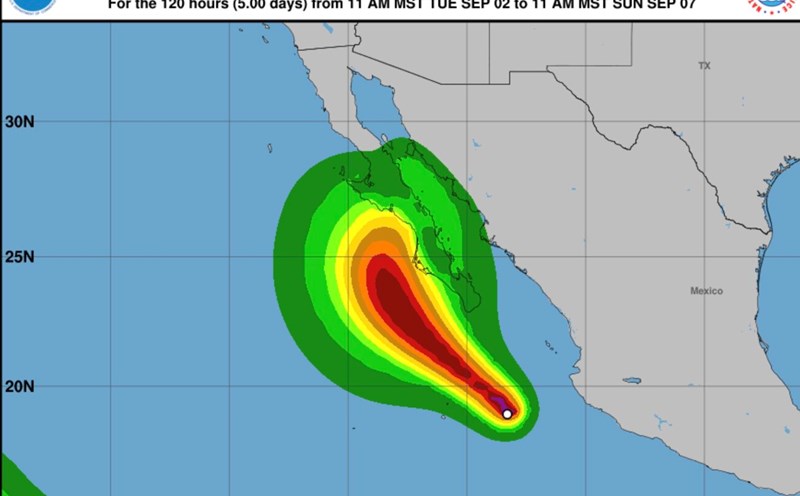The latest hurricane report from the US National Hurricane Center on September 4 said that storms and tropical depressions are expected to be active in the coming weeks as weather conditions promote the second half of the hurricane season to be vibrant in September and October.
The National Hurricane Center is monitoring the depression in the eastern Atlantic and said the system has a 70% chance of becoming a tropical storm and active next week.
It is too early to say what path the potential storm will take, but people living in the Caribbean should monitor developments closely as it could approach next week.
On the morning of September 3, the system is being monitored as a cluster of showers and thunderstorms south of the Cabo Verde Islands, more than 3,200km from the Lesser Antilles.
Some weather forecast models show that this system will strengthen into a tropical depression or storm by the end of the week.
Overall, the potential system to strengthen into Typhoon Gabrielle will move westward next week, along the southern edge of the Bermuda high pressure system. The intensity of the high pressure will affect the movement of storm No. 7 of the storm season to the south or north.
If it forms, it will be the seventh storm of this year's Atlantic hurricane season. Of the six storms since the start of the season, only Erin has strengthened into a hurricane and is active for nearly two weeks in the Atlantic.
With the possibility of La Nina returning, along with unusually warm ocean temperatures, storm activity is likely to be vibrant throughout November.

Hurricane forecaster Andy Hazelton said that the activity of storms and tropical depressions in the Atlantic will be active in the coming weeks as the Madden - Julian fluctuations will create more thunderstorms and may strengthen into tropical storms.
There have been six named storms in this year's Atlantic hurricane season, which is equivalent to normal levels in early September.
A typical Atlantic hurricane season typically has 14 named storms, seven hurricanes, and three major hurricanes.
The latest hurricane forecasts from the National Oceanic and Atmospheric Administration (NOAA) and Colorado State University show that the number of named storms is much higher than the average that could have occurred this season.
Colorado State University predicts a "higher chance of major hurricanes making landfall on the U.S. and Caribbean coasts" this season. Other meteorologists also predict a high risk of landfall.











